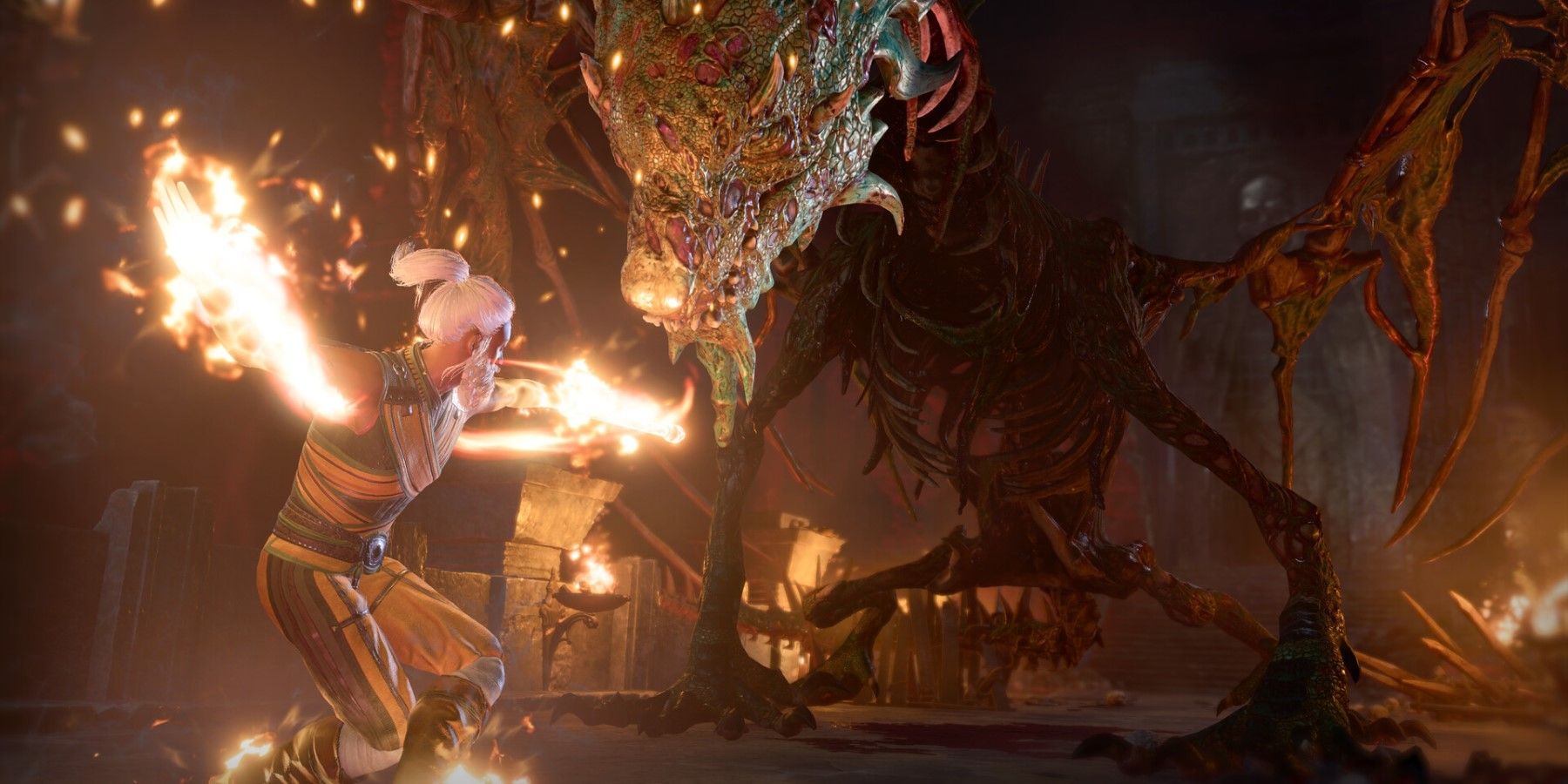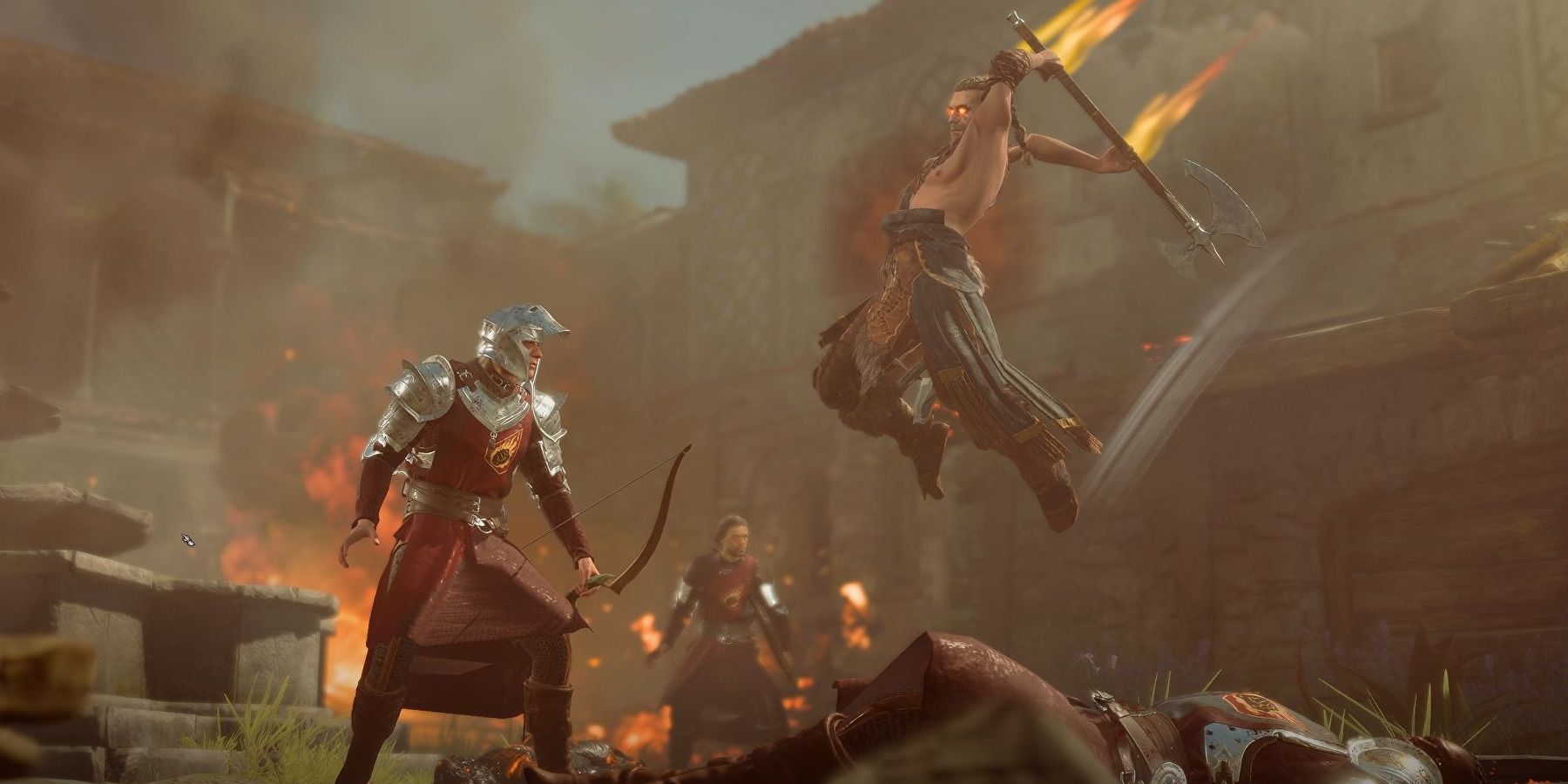Quick Links
Baldur's Gate 3 is a faithful recreation of the Dungeons & Dragons Fifth Edition rules, allowing players to bring their favorite tabletop characters to Larian Studio's new CRPG. Aside from a few balancing tweaks to better suit a videogame experience, Baldur's Gate 3 offers all the classic D&D features, including Feats, Proficiencies, and multiclassing.
Multiclassing has been around since the very first edition of Dungeons & Dragons, encouraging players to break out of the normal class restrictions and create characters that don't fit the traditional archetypes. Multiclassing in Baldur's Gate 3 can allow players to do the same, to take the game's 12 classes and combine them into thousands of unique combinations.
However, although multiclassing can offer players unprecedented freedom in designing their character, it can also be a trap for the unwary, leading to subpar creations that struggle to keep up with their single-class companions.
How to Multiclass in Baldur's Gate 3
Multiclassing in Baldur's Gate 3 follows the Dungeons & Dragons Fifth Edition rules almost exactly, with only one major change. In Fifth Edition, players must have at least a 13 in their new class' key Ability Score in order to multiclass into it, Charisma for Sorcerers, Intelligence for Wizards, etc. However, Baldur's Gate 3 removes this rule, allowing players to multiclass without worrying about their Ability Scores. Although this may seem a minor difference, it means that players have the full set of options if they decide to multiclass later in the Baldur's Gate 3 story, and don't need to plan out their potential class changes during character creation.
With the removal of this rule, multiclassing in Baldur's Gate 3 is as simple as choosing to gain a level in another class when the player character levels up. This will grant all the class features available at the chosen level of the new class, but does come with some limitations. Players will never receive new Saving Throw Proficiencies by multiclassing, and they will also receive a reduced set of Weapon and Armor Proficiencies. Finally, only the Rogue, Ranger, and Bard classes offer an additional Skill Proficiency when multiclassing.
The Hazards of Multiclassing in Baldur's Gate 3
Multiclassing may be easy to do in Baldur's Gate 3, but it isn't always a good idea. The most important thing to do when multiclassing is to pay attention to the Ability Scores of the character and the Ability Scores that are recommended for the new class. Although it's possible to multiclass into Wizard with only 8 Intelligence, it's not recommended except in a tiny number of builds that can avoid using the Wizard's most important Ability Score. For most builds, trying to be an 8 Intelligence Wizard would be a disaster, with terrible accuracy and low DCs for all their spells.
The second hazard of multiclassing is missing out on the all-important power boosts that occur at certain levels in Dungeons & Dragons Fifth Edition. While gaining other class features will always make a character more versatile, they may quickly find themselves falling behind in terms of raw power if they keep multiclassing before they can reach these important levels:
- Level 3 - The first major power increase in D&D, considered by many tabletop players to be the end of the "tutorial levels". At level 3, spellcasters get access to 2nd level spells, and most classes will gain a subclass that can greatly boost their power.
- Levels 4, 8, and 12 - These levels grant Ability Score Increases, allowing players to improve their key Ability Scores or pick up a powerful Feat to suit their build.
- Level 5 - Martial classes gain Extra Attack at level 5, often doubling their damage output, while spellcasters get access to powerful 3rd-level spells. It's worth noting that the damage of cantrips actually scales with character level rather than class level, so a Wizard 1/Fighter 4's cantrips will deal the same damage as a Wizard 5's.
The Benefits of Multiclassing in Baldur's Gate 3
Aside from the increased versatility that comes with a whole new set of class features, there can be many benefits to multiclassing in Baldur's Gate 3. Successful multiclassing is all about finding synergy between classes, reinforcing strengths and mitigating weaknesses. Some of the most popular multiclass builds on the tabletop that also work in Baldur's Gate 3 rely on this synergy, including:
- The Sorcadin (Sorcerer/Paladin)
- This popular build combines the plentiful spell slots of the Sorcerer with the martial strength and Divine Smite ability of the Paladin. Divine Smite can turn spell slots into Radiant Damage on weapon attacks, allowing the Sorcadin to combine high-level spellcasting with great burst DPS in close-combat.
- The Gloomssassin (Ranger/Rogue)
- This stealthy build combines two subclasses that excel at alpha-strikes and surprise attacks, the Gloomstalker Ranger and the Assassin Rogue. As well as the incredible first turn damage that this combo can produce, the hybrid of Ranger and Rogue is also a well-rounded character with spellcasting and solid skills.
- The Sorlock (Sorcerer/Warlock)
- The Sorlock solves the problem of spellcasters losing their power when they run out of spell slots by combining the powerful and upgradeable Eldritch Blast cantrip with the Sorcerer's Quicken Spell Metamagic. Using this combo, the Sorlock can fire multiple Eldritch Blasts in a turn, inflicting heavy damage and a variety of other nasty effects.
Although Baldur's Gate 3 has remained largely faithful to the 5E rules, players who want to use a tabletop multiclassing build will have to be careful that it hasn't been weakened or invalidated by a minor rule change. However, with a little research and careful planning, there's no reason that any Baldur's Gate 3 player should worry about diving into multiclassing. This is particularly true as, unlike in Fifth Edition, Baldur's Gate 3 offers a respec option for players to try again if they don't like their build.
Baldur’s Gate 3 will release on August 3, 2023, for PC and September 6, 2023, for PS5.




